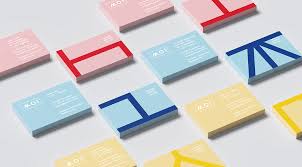Introduction:
In the fast-paced world of business, first impressions matter more than ever. A well-designed business card serves as a powerful tool to make a lasting impression and leave a positive mark on potential clients or collaborators. In this article, we will explore the key elements of good business card designs that not only catch the eye but also convey professionalism and creativity.
Simplicity is Key:
When it comes to business card designs, simplicity reigns supreme. A cluttered and complex design can overwhelm the viewer and dilute the impact of your message. Aim for a clean and uncluttered layout that conveys essential information. Choose a simple color palette that reflects your brand identity and maintains a professional appearance.
Clear and Concise Information:
A successful business card communicates crucial information in a clear and concise manner. Include your name, title, company name, and contact information. Ensure that the font size is readable, and the information is strategically placed for easy access. Remember, the goal is not to overwhelm but to provide just enough information to pique interest and encourage further contact.
Branding Consistency:
Your business card is an extension of your brand. Consistency in branding, including the use of logos, color schemes, and fonts, is crucial. This consistency reinforces your brand identity and makes your business more memorable. Ensure that your business card aligns seamlessly with other marketing materials to create a cohesive and professional image.
Creative Use of Space:
While simplicity is essential, it doesn’t mean your business card has to be boring. Creative use of space can make your card stand out. Consider incorporating subtle textures, background patterns, or a unique layout that enhances the overall visual appeal. However, strike a balance to avoid overwhelming the card with excessive design elements.
Quality Materials:
Investing in high-quality materials can elevate the perceived value of your business card. Opt for sturdy cardstock with a professional finish. Matte or glossy finishes can add a touch of sophistication, while textured papers can create a tactile experience. The choice of material contributes to the overall feel of the card and reflects the attention to detail you put into your business.
Innovative Shapes and Sizes:
Break away from the traditional rectangular business card and explore innovative shapes and sizes. A non-traditional shape can make your card memorable and stand out in a stack. However, ensure that the shape doesn’t compromise practicality. It should still fit easily into standard cardholders and wallets.
Utilize the Back of the Card:
Don’t neglect the back of your business card. It provides valuable space for additional information or a creative touch. Consider adding a brief tagline, a QR code linked to your website, or a striking visual element. This space is an opportunity to reinforce your brand message or provide a memorable detail that sets you apart.
Photography and Imagery:
Including a professional photograph or relevant imagery can add a personal touch to your business card. Ensure that the image aligns with your brand and industry. A well-chosen image can convey your personality, build trust, and make you more memorable to those you meet.
Conclusion:
In the world of business, a well-designed business card is a powerful tool that can open doors and create lasting impressions. By focusing on simplicity, clear information, branding consistency, creative use of space, quality materials, innovative shapes, and utilizing both sides of the card, you can create a business card that not only represents your brand effectively but also leaves a lasting impact on those who receive it. Remember, a good business card is not just a piece of paper; it’s a tangible representation of your professionalism and creativity.















